How to record guitars: getting to grips with the basics
New to the world of guitars? Start here...
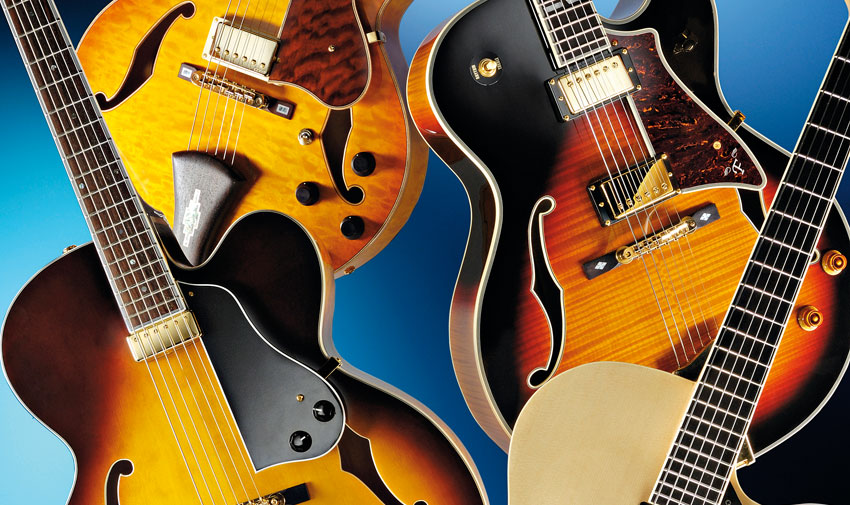
PRODUCTION EXPO 2013: If you're a guitar fan, then nothing gets the pulse racing quite like the opening riffs of Whole Lotta Love, Smells Like Teen Spirit or Seven Nation Army. A simple riff, in the right hands, with the right sound is nothing short of incendiary!
When we imagine how these tracks were recorded our minds eye wanders into a big studio, perhaps a large wooden live room, with a bank of steaming amplifiers festooned with wonderful vintage microphones being put through it's paces by Jimmy Page, Kurt Cobain or Jack White playing a priceless guitar through a dream pedalboard.
Sometimes it's like that, but not always [indeed, all of those players used a surprising array of affordable gear in the studio - Ed]. It's absolutely possible to get a great guitar recording in your studio if you know how to get the source signal right, and you have a basic knowledge of the "DNA" of a guitar sound.
This is a guide to the cornerstones of tone: guitars, amps, cabs, pedals and state of the art digital effects and analogue modelling technology. We'll also show you some trade secrets, so you'll know how to make the best recording, whatever system you end up using. You just have to supply the riffs.
The guitars
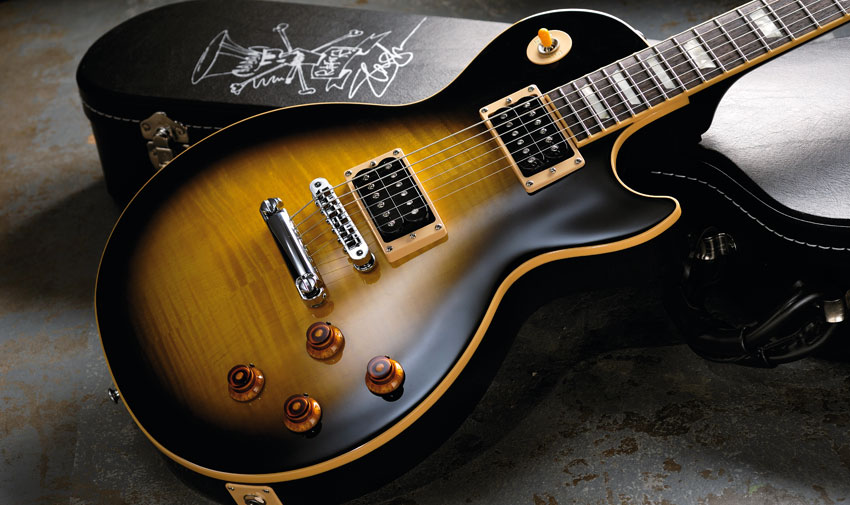
A Gibson Les Paul, as favoured by the likes of Slash, Jimmy Page and hundreds of other guitar heroes
Let's start at the very beginning. Of course it all starts with the guitars - whether it's the ubiquitous Fender Stratocaster and Gibson Les Paul, the workhorse Gibson SG and Fender Telecaster, a semi-acoustic, like a Gibson ES-335, the idiosyncratic Fender Jazzmaster, or hard rocking Gibson Flying V...
Almost every electric guitar you can buy today is one of these, a copy of one of these or a direct descendant. Each one has earned it's place in rock history, and has it's own distinct sound. Make sure you do your research and get to know which gear you need to get the tones your after. You could be wasting your time trying to get a 'twang' out of a Gibson Les Paul and equally your Strat may not prove ideal for metal.
Get the MusicRadar Newsletter
Want all the hottest music and gear news, reviews, deals, features and more, direct to your inbox? Sign up here.
The amps
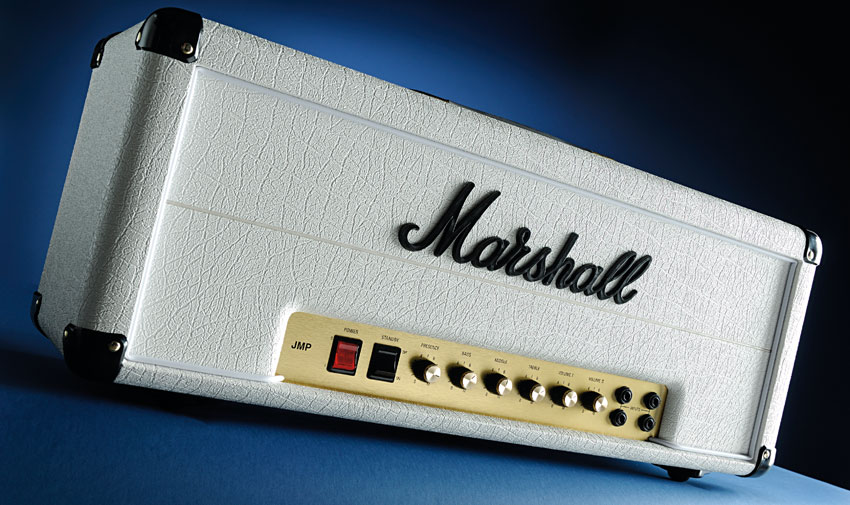
The Marshall 'Plexi' tone forms the backbone of Angus Young's biting hard rock sound
Amplifiers are the traditional way of letting the world hear your guitar. Of course we don't actually need amplifiers in order to record our guitars, but its important to understand the role of these beasts, and why players devote themselves to their systems in search of the perfect tone.
Like guitars, different amps do different jobs and their tones will vary depending on the instrument they're paired with. As a rule of thumb, Marshalls work brilliantly for rock and hard rock (think AC/DC to Guns N' Roses), Vox and Fender amps tend to be the choice of indie/alt rock players, while the ultra heavy players tend to opt for the high gain of Peavey or Mesa/Boogie boxes.
What does it do?
The amplifier takes the signal from your electric guitars pickup and amplifies it electronically so you can hear the sound from a speaker. This process varies in complexity from one system to the next. Some of the most expensive and sought after amps actually do little other than simply amplify the sound, but the components and design create an exceptional tone. Some amps are very cheap, yet offer all kinds of built- in effects, but actually sound thin and wimpy.
As a general rule the best sounding amps have an eq, sometimes a reverb and tremolo, and sometimes two channels for different sounds. Transistor or solid-state amps need less maintenance, but don't have the sound of more expensive valve amps.
What's so great about valves?
You can go very deep with valves. There are different manufacturers, different types - you'll hear terms like triode and pentode outputs, you'll hear about "sag" (not spinach) and asymmetrical clipping and "class A" (not drugs) power stages - and so on and on. The same with transformers and capacitors - yawn.
The fact is that valve amps sound better, and even the best players will only go so far into that world, they just know what they like, and what replacement parts to order. Some of the state- of-the-art virtual amp systems we're looking at later in this article allow you total control over every aspect of the valves and internal amp components, and this can be a fantastic training ground for the would be geek.
Changing these components does affect the sound, but there's no right or wrong. If you like that sound, then that sound is right. End of. You decide how deep you need to go. By the time you've read this you'll be able to approximate most sounds pretty fast, then you can tweak at your leisure.
Speaker and cabinets
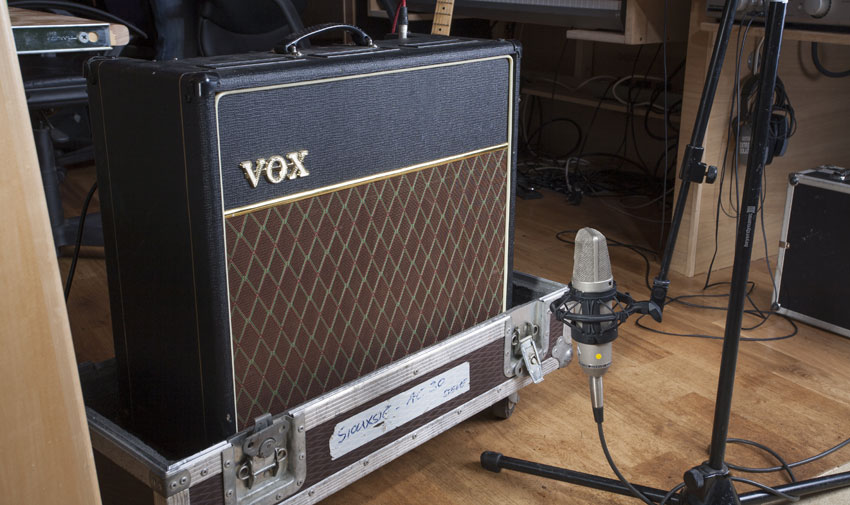
The Vox AC30 is a classic combo amp and was much-favoured by British groups in the '60s
The sound of the amp itself is actually rubbish without the speaker. These speakers, which tend to be 10" or 12'' drivers have a limited frequency response, which is very flattering to the harsh sound of amplifier distortion.
The speakers can be used singly or in groups and will also sound different depending on their housing or cabinet (cab), and there are loads of these to choose from too. There are open-backed and closed cabs. The closed cabs create more "whoomph" or cabinet thump and are more used for rock and metal.
As you can imagine there are strongly held opinions about which speakers sound best, and many legends and myths about components, and whether particular recordings were made with slightly broken drivers etc. Open backed cabs tend to be lighter in tone, but even then, the way they are recorded can make a massive difference to the final sound.
The all-in-one amp and speaker box is known as a combo! A separate amp and cabinet setup is known as a stack.
Stacks, being modular by nature, are more easily expandable to bigger, louder rigs, more tonally complex rigs.
Many time players will run several rigs at the same time to create a mix of sounds that would be unobtainable from one amp alone.
Amp modelling and plug-ins
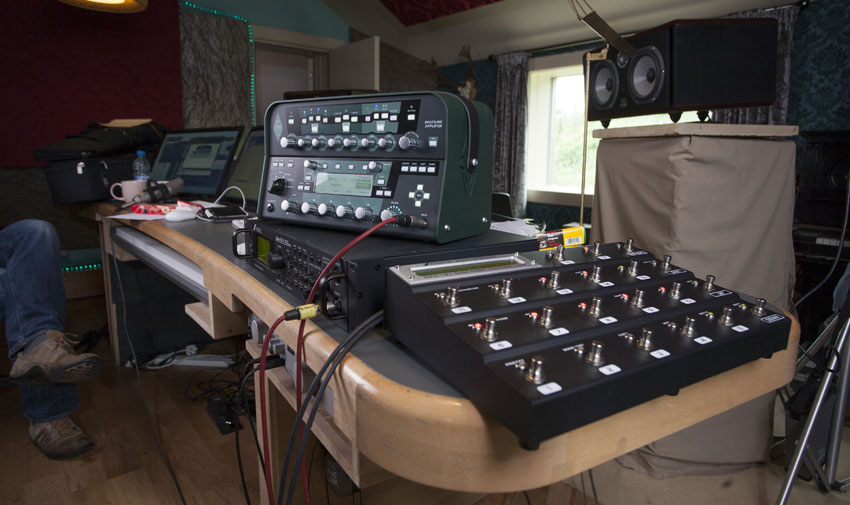
At the market's high-end, the Kemper Profiling Amp (top) and Fractal Axe-FX II are changing the landscape of guitar tone
Of course, these days there's quicker, cheaper and above all smaller ways to get a big sound. There's a great story about a bunch of techies working at Alesis in the 90s who were all covertly working on the idea of digitally modelling amplifier distortion. If they wanted to have a conversation about their secret project they would say "there's a call coming through on line 6...".
Line 6 became the name they adopted and they introduced the world to modelled guitar amps in the memorable form of the Pod, a dark red, kidney shaped desktop gadget eagerly snapped up by producers, engineers and guitarists looking to save time and hassle recording guitars.
Line 6 went on to dominate this area with the Bass Pod, the rack mountable Pod Pro with studio spec connections, and the awesome Vetta and Vetta II combos, which were effectively a pair of Pod Pros plus a bunch of extra modelled stomps, reverbs and modulation effects packed into a super loud amplifier, also with all the pro connectors needed for almost anything!
Meanwhile, at the touring pro end of the market, Fractal's astonishingly accurate Axe-FX II guitar processor/amp modeller is quickly becoming the unit of choice for many players, particularly in the world of heavy metal, where gain means everything.
In addition, our computers have become more powerful by the day, and there are some spectacularly good modelling plug-ins (primarily IK Multimedia's Amplitube and Native Instruments' Guitar Rig) out there which enable the guitarist to plug straight into a soundcard, record a dry "DI" guitar signal, and allow all the processing to occur in real time during the session, just like any other kind of virtual instrument. This way of working also has the benefit of very easy automation of parameter settings.
You can add in wah-wah, or stomp box performance, and change patches throughout the song, and keep tweaking the sound all the way up until the final mixdown.
With the right carefully chosen ammo and the following few basics you needn't spend a fortune to get the guitar recording you've dreamed of. Have fun!
Mic-ing up amps
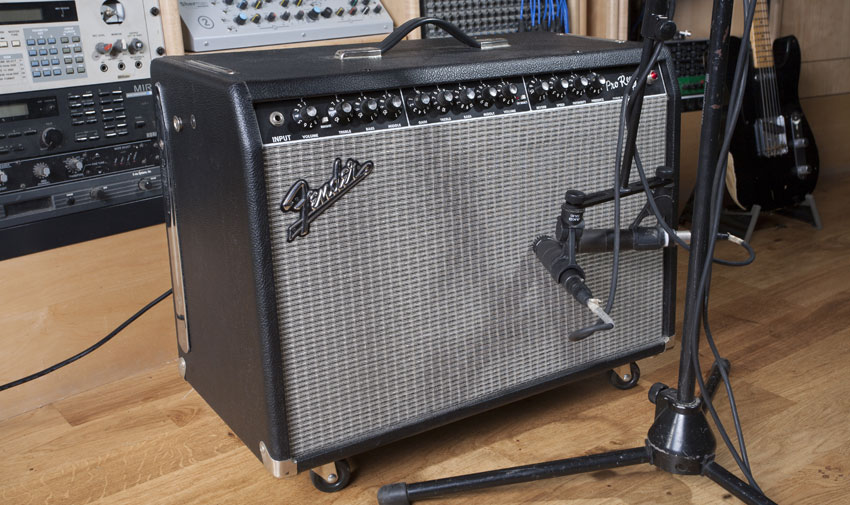
Shure SM57 dynamic mics are perfect for close mic positions
Mics come in three varieties: dynamic, condenser and ribbon. Dynamic mics like a Shure SM57 are great for coping with high volumes at close proximity, so you can plonk them right next to the speaker and make small positional adjustments between the centre and outer rim of the speaker cone to get a brighter or darker sound.
Using two identical dynamic mics positioned between 45 and 90 degrees to each other and mixed together can give an extra thickness to the sound. Dynamic mics are particularly useful when you don't want to pick up much of the ambient sound of an unpleasant sounding space.
Ribbon mics are more sensitive and have a "figure of eight" polar pattern which means they pick up more of the surrounding room sound. They are not overly bright sounding mics and can be very flattering to a guitar sound without much in the way of EQ.
Condenser mics are much more sensitive, open and accurate. They can be used in situations where the speaker sounds great in the room, and you want to capture more of the ambient atmosphere. They often have variable patterns so you can be reasonably directional toward the speaker with a "hyper cardioid" pattern, or out in the room with an "omni-directional" pattern.
It's often a good idea to raise the speakers from the floor in an attempt to reduce the amount of early reflections from the floor reaching the microphone before the direct sound of the speaker. When you have open backed cabs or combos it's also common practice to put a mic behind the speaker (phase reversed) and mix the sounds of front and back together to capture a more complete sound.
You can match all of these techniques and record the whole lot so you can choose which elements of the sound are going to work best in your mix at a later point.
Signal management
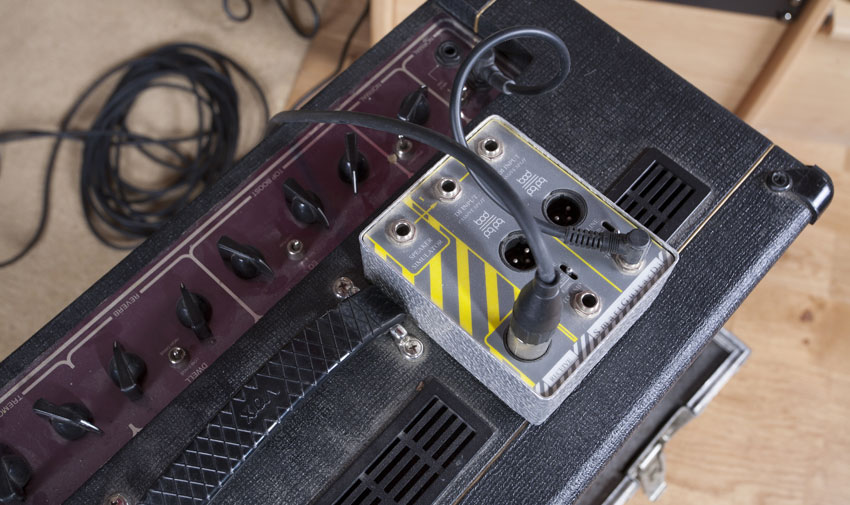
Buffered line drivers like the Smart Research Guitar DI can help when you're running cable over long distances
Some guitarists insist on standing in the room with their amp (or amps) as the sympathetic resonance of the guitar pickups and strings interacting with the loud sound from the speakers creates an extra facet to the sound - and it's also easier to control feedback if needed.
Others would rather be in the "control room" where they can hear the sound of the guitar "in" the mix and make contextual judgements about the sound and the parts/ performances.
Using multiple amps, or sending the guitar signal over a long distance to amps in another room can present technical difficulties and also may allow the dreaded "hum" to infiltrate the signal.
A little known trick used by the pros is to use a buffered line driver. A great example of one of these systems is by Smart Research and consists of a powered "transmit" box that uses a balanced XLR cable to connect to a "receive" box that can be 100s of feet away if needed - with no interference or signal degradation.
Not only that, the boxes will also provide DI outs for clean recording, and multiple feed for a multi amp setup. A set of these boxes can make recording real amps very quick and simple.
This feature is taken from the Future Music special Recording: The Ultimate Guide. With 164 pages of pro advice, if you're serious about recording music be sure to check it out.


Future Music is the number one magazine for today's producers. Packed with technique and technology we'll help you make great new music. All-access artist interviews, in-depth gear reviews, essential production tutorials and much more. Every marvellous monthly edition features reliable reviews of the latest and greatest hardware and software technology and techniques, unparalleled advice, in-depth interviews, sensational free samples and so much more to improve the experience and outcome of your music-making.










